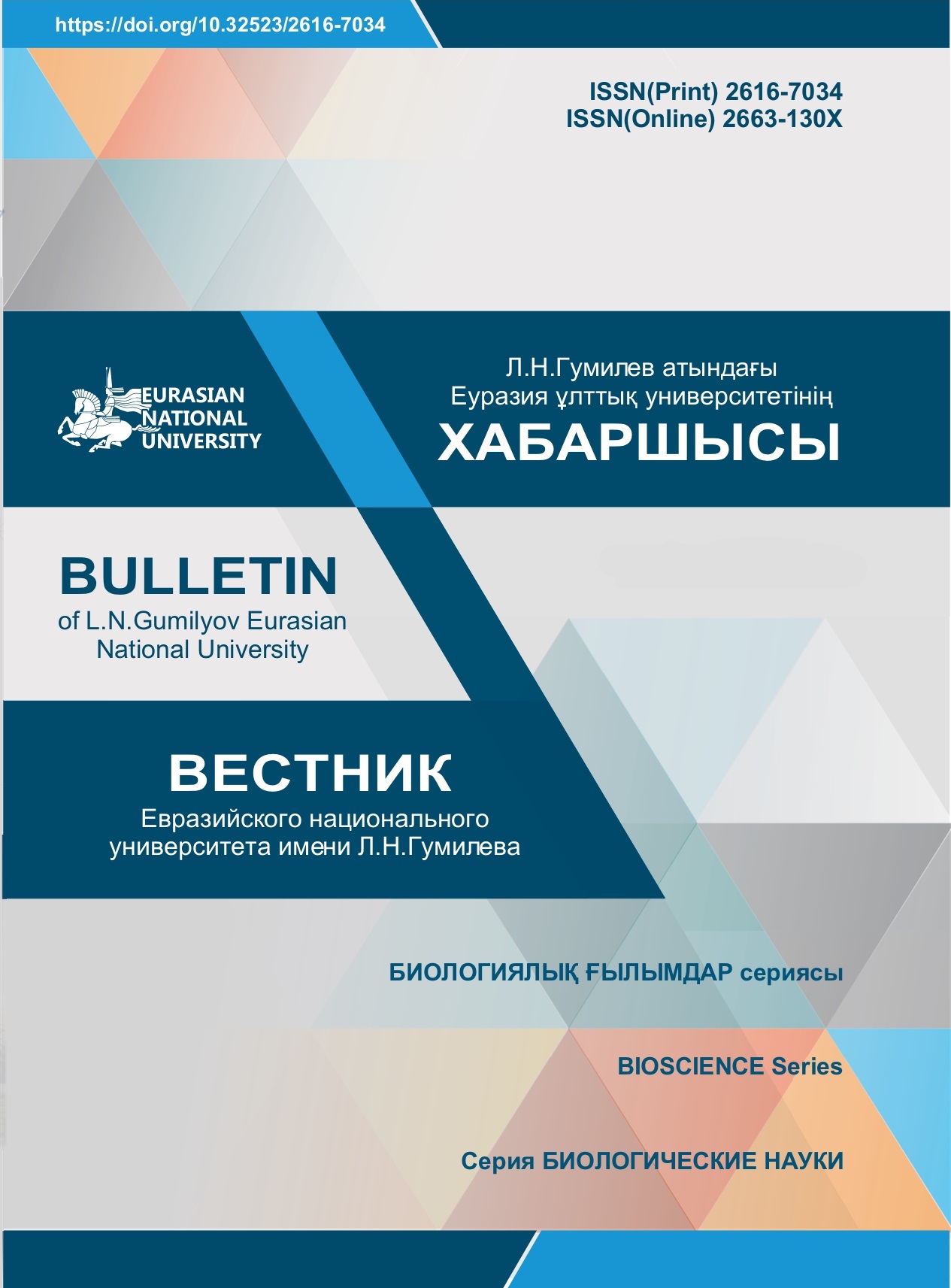Zooplankton structure and hydrochemical characteristics of mountain reservoirs of the northern Tien-Shan
Views: 205 / PDF downloads: 219
Keywords:
zooplankton, mountain reservoirs, abundance, biomass, Northern Tien-ShanAbstract
The study of hydrochemical parameters and zooplankton structure of three mountain reservoirs of the Northern Tien Shan (Lower Kolsai Lake, Tekes and Bestyubinskoe reservoirs) was carried out in August 2022. Hydrochemical analysis showed that the water in all reservoirs is fresh, soft, carbonate class, calcium group of the second type. The average content of easily oxidizing organic substances reached 5.6–7.6 mg/dm3, nitrite nitrogen – 0.011–0.044 mg/dm3, nitrate nitrogen – 0.274–0.830, ammonium nitrogen – 0.045–0.091, phosphates – 0.023–0.031, iron – 0.090–0.166, silicon – 3.0–5.4, manganese - 0.011–0.025 mg/dm3. Zooplankton was represented by 41 species. Zooplankton abundance varied between 11081-69061 ex/m3. Zooplankton biomass reached 11.7–700.2 mg/m3. Cluster analysis based on the calculation of the Bray-Curtis index showed changes in the species composition of planktonic invertebrates over the past fifty years. The growth of species richness in the Lower Kolsai against the background of an increase in the quantitative indicators of planktonic invertebrates is due to the increasing recreational load on the lake and the adjacent land area. The decrease in the species richness and abundance of zooplankton in the Tekes reservoir may be due to sharp fluctuations in the water level in the seasonal and interannual aspect and its periodic filling with river water not enriched with nutrients.








